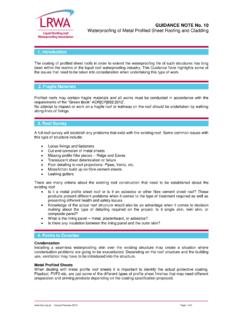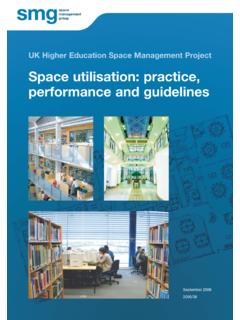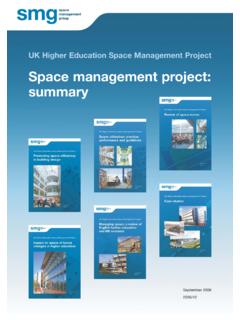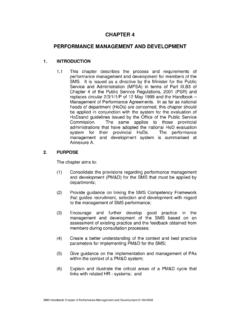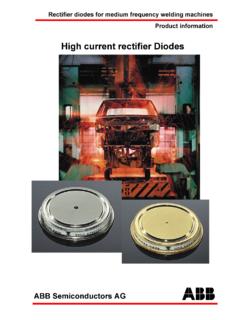Transcription of Code of Practice - LRWA
1 code of PracticeSpecification and Use of Liquid Applied Waterproofing Systems for Roofs, Balconies and WalkwaysProduced by the Liquid Roofing and Waterproofing AssociationNovember 201021 FOREWORDD uring recent years liquid applied waterproofing systems have made huge strides in providing solutions to the practical problems within the flat roofing and waterproofing industry. Circumstances within the market, health and safety concerns and technical advances have made it possible for liquid applied waterproofing systems not only to become part and parcel of what is perceived as the traditional answer to flat roofing problems, but to become the leading solution to solving these fact that liquid applications are totally seamless, and in many cases can be cold applied, has not been overlooked by the roof waterproofing industry.
2 Many liquid applied waterproofing membrane manufacturers now provide complete solutions for the new build and refurbishment sectors including full insulated warm roofs that are generally completely cold applied. The seamless nature of liquid applied systems is now seen as the perfect waterproofing solution to anyone who wishes to utilise a roof area as a green roof terrace or a pedestrian trafficked podium roof, many of which are found within shopping centre type projects. The days of just using liquid systems purely as refurbishment coatings are well and truly over. We in the Liquid Roofing and Waterproofing Association understand the difficulties in choosing the right quality products and their correct application/specification for the correct project, and to that end we have produced this code of Practice to assist you to make your decision.
3 This code of Practice will not only help you with your choice of system and product, but also guide you with regard to health and safety, substrate preparation, specification preparation, product application and importantly quality control procedures on site. Within this code of Practice there are suggestions with regard to how to carry out details with liquid applied membranes but it is important to remember that every project is different and all details should be completed in accordance with the specified manufacturer s note that this code of Practice is a guide that is aimed to help you with providing nothing but the best quality waterproofing system for your project but because of the differing types of liquid membranes available the manufacturer s specification must be strictly adhered FOREWORD2 GENERAL Scope p4
4 Introduction p4 Definitions p43 GENERIC TYPES OF LIqUID APPLIED WATERPROOFING SYSTEMS European Technical Approvals p9 ETAg and PARTS p9 National Certification p94 HEALTH AND SAFETY Safety Data Sheets p10 Reference List p10 Health and Safety in Roof Work p11 CDM Regulations p11 COSHH Regulations p115 BUILDING REGULATIONS Essential Requirements p126 SUBSTRATES Introduction p13 Categorisation of Substrates p13 Further Guidance p137 SPECIFICATION - PREPARATION AND APPLICATION General p14 Preliminary Inspection p14 Roof Construction - Inspection p14 Specification p14 Storage p16 User Load p16 Working Life p17 Climate Effects p17 Surface Protection p17 Detailing and Terminations p188 qUALITY CONTROL ON SITE General Aspects of quality Control p23 Completion p239 MAINTENANCE General p25 Inspections p25 Repairs p25 Refurbishment p25 Long Term Maintenance p2610 TRAINING11 READING REFERENCES12 APPENDICES i Roof Survey Assessment Form SCOPEThe code covers the selection and application of LRWA members Liquid Applied
5 Waterproofing Systems, Health and Safety aspects, procedures for specification of materials and methods, survey and inspection, observation of relevant regulations/legislation, utilisation of competent contractors including quality Control and training, and INTRODUCTIONThis code of Practice has been prepared to provide specifiers, clients, suppliers, contractors, and other interested parties with a comprehensive guide for the waterproofing of roofs, balconies and walkways and treatment of associated fittings and constructions, using Liquid Applied Waterproofing Systems from LRWA code of Practice is issued by the European Liquid Waterproofing Association.
6 It is based upon best Practice and provides guidance on the specification and use of Liquid Applied Waterproofing on the collective experience of LRWA members, and that of manufacturers, suppliers, contractors and specifiers within the roofing and waterproofing industry, this code is published with the intention of improving and maintaining performance and quality standards of Liquid Applied Waterproofing Systems materials and their details may vary depending upon specific circumstances, the principles and methods used should be substantially the same as those set out in this document.
7 In properly maintained structures, the methods set out here are designed to achieve satisfactory information provided in this code should always be used in conjunction with that given by the manufacturer of the liquid systems in use. The manufacturer s detailed literature and instructions for applying the specific Liquid Applied Waterproofing Systems should be carefully followed in all cases. The code is not designed to constitute or provide a work acknowledges the participation of the representatives of the National Federation of Roofing Contractors in the preparation of this code of DEFINITIONSFor the purposes of this code of Practice , the following definitions apply:i) FLAT, PITCHED OR CURVED ROOFSFlat Roof.
8 The term flat roof is defined by the roofing industry in general, as a roof with an angle of slope or pitch of not more than 10 to the horizontal, constructed to form a barrier against climatic many designers of Liquid Applied Waterproofing Systems regard a flat roof as the plane or substrate which carries the waterproofing membrane. It may be flat horizontal, flat sloping or a plane of curvature. The weathering surface is continuous or made from large components in contrast to a tiled or slated roof construction may be of in-situ or precast concrete, metal decking, timber or steel rafters, all of which may support other materials.
9 Concrete decks may include an overlayer of concrete screed. On steel or timber joist constructions there will be a structural decking between the materials under the roof weatherproofing system may then be any one of the following: Concrete or concrete screeds (normal or light) plywood oriented strand board (OSB) softwood timber boarding chipboard (dense compound of wood chips and resin) foamed plastics insulation boards (polystyrene and polyurethane) fibreboard (various soft fibrous materials for insulation, in board form) wood wool (wood fibres held by cement in an open celled board) strawboard (compressed straw resin bonded) These decks are no longer used for new construction, but may be found in refurbishment work.
10 Their structural integrity must be ascertained by a competent flat roofs in the UK for refurbishment works are likely to be covered by one or more of the following materials: mastic asphalt built-up bituminous felt flat metal sheets lead, zinc, aluminium, copper, stainless steel polymer sheeting (laid as one layer) promenade tiles - fibre cement liquid applied waterproofing systems2 GENERAL5 Flat roofs often provide an ideal location for plant or equipment and suitable maintenance access is then Roof: It follows then that the industry definition of a pitched roof is one with an angle of slope or pitch exceeding 10 to the horizontal, constructed to form a barrier against climatic roofs can be constructed with timber purlins and rafters or timber trusses, with battens for supporting tiles or slates.
